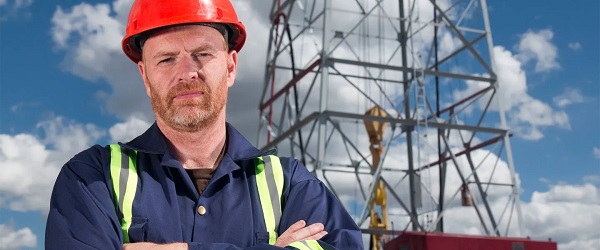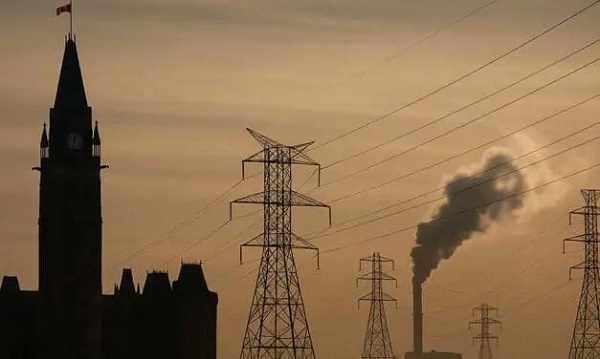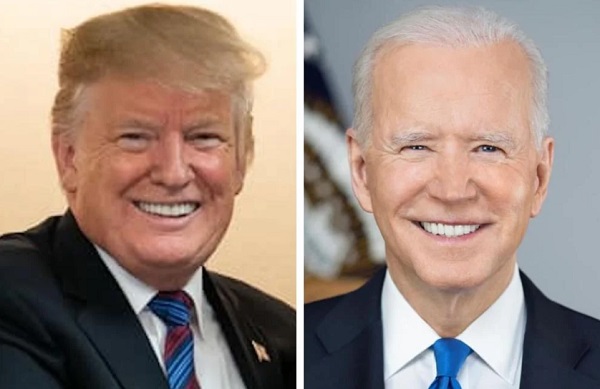Energy
Sending natural gas pipeline project back for environmental review could put $20 billion investment at risk

From Resource Works
Ksi Lisims LNG too important to fail
The BC Environmental Assessment Office (EAO) is expected to soon determine whether the Prince Rupert Gas Transmission (PRGT) pipeline project has been “substantially started” as per the conditions of its provincial environmental certificate. Later this summer, the EAO is also expected to issue a recommendation on the Ksi Lisims LNG project, which would be supplied by the PRGT pipeline.
If these regulatory hurdles are cleared, the project is still likely to face court challenges, including judicial review applications from environmental groups and potentially the Gitanyow First Nation. The stakes are high: Ksi Lisims LNG represents a $20 billion investment and is a clean energy mega-project that the government of Premier David Eby cannot afford to lose, both in terms of economic development and reconciliation with Indigenous communities.
Should the EAO conclude that PRGT has not made a substantial start, the project’s environmental certificate would expire. The proponents—the Nisga’a Nation and Western LNG—would then be required to restart the environmental review process from scratch. This would result in years of delay and potentially hundreds of millions of dollars in additional costs. Timing is especially critical for LNG projects targeting Asian markets, where long-term supply contracts, often lasting 15 to 20 years, must align with project timelines. Ksi Lisims aims to be operational by 2029.
Petronas Energy Canada CEO Mark Fitzgerald recently told the Greater Vancouver Board of Trade that Canada has an 18-month window to move key projects forward or risk losing investment opportunities. This warning echoes past experience: in 2017, Petronas canceled the Pacific Northwest LNG project just one week after the NDP government took office, despite having invested nearly $1 billion. That decision resulted in the mothballing of the PRGT pipeline and signaled the collapse of other major LNG projects, including Kitimat LNG (Chevron), Aurora LNG (Nexen), WCC LNG (ExxonMobil), and Prince Rupert LNG (Shell). Many investors instead shifted their focus to the United States.
While previous cancellations were partially attributed to macroeconomic factors, these did not deter LNG investment in other jurisdictions. In contrast, Ksi Lisims LNG has recently gained momentum, with significant financial backing from Blackstone Energy Transition Partners, Shell, and TotalEnergies through private placements, off-take agreements, and planned equity stakes. However, investor confidence is fragile and can evaporate if the project becomes mired in regulatory or legal delays.
The PRGT pipeline received its original environmental certificate in 2014 with a five-year term, later renewed once. The Nisga’a Nation and Western LNG must now demonstrate that substantial construction has commenced to maintain that certification. According to Western LNG, work completed includes clearing 47 kilometers of right-of-way on Nisga’a treaty lands, constructing 42 kilometers of road, and building nine bridges. Whether this constitutes a “substantial start” is under review. Groups such as Ecojustice and the Gitanyow First Nation have submitted objections, arguing that it does not meet the threshold.
It is notable that the Gitanyow originally supported PRGT through impact benefits agreements with the province and project agreements with the previous proponent, TC Energy. However, their position shifted after ownership transferred to the Nisga’a Nation and Western LNG. The Gitanyow now argue the project has changed substantially, including a re-routing near the western terminus to accommodate the new Ksi Lisims LNG terminal, which is located further north than the originally planned Pacific Northwest LNG terminal.
Such disputes highlight why both federal and provincial governments have recently begun developing fast-tracking legislation for major infrastructure projects deemed to be in the national interest. These new legislative tools are intended to reduce bureaucratic delays and provide greater regulatory certainty. Ksi Lisims and PRGT meet many of the criteria such legislation is designed to support and would be strong candidates for such treatment should the EAO’s decision result in further delays.
Importantly, Ksi Lisims LNG is not simply a project supported by the Nisga’a Nation—it is being led by them. In addition, all other First Nations along the proposed pipeline route, except the Gitanyow, appear to support the project and are being offered equity participation. This makes Ksi Lisims a powerful example of reconciliation in action.
Furthermore, the project’s floating LNG design significantly reduces its terrestrial footprint and associated environmental impact, particularly on fish habitats. The proponents have also committed to using electricity to power the liquefaction process—when it becomes available—to align with British Columbia’s net-zero emissions targets. These factors support the classification of Ksi Lisims LNG as a clean energy project.
If this project does not meet B.C.’s environmental and social standards, it is difficult to imagine what project could. As Ellis Ross, the newly elected Conservative MP for Skeena–Bulkley Valley, recently stated, “It hits so many of the bullets that politicians have been talking about for so many years.”
If federal and provincial leaders are serious about supporting “nation-building” infrastructure, then Ksi Lisims LNG should be at the top of the list—particularly if the EAO process creates further complications. That said, proponents remain cautiously optimistic. “I don’t think the Nisga’a will give up,” Ross added. “I don’t think it will fail. But if it doesn’t get approved, it will have to incur more cost and more time.”
Business
Senator wants to torpedo Canada’s oil and gas industry

From the Fraser Institute
Recently, without much fanfare, Senator Rosa Galvez re-pitched a piece of legislation that died on the vine when former prime minister Justin Trudeau prorogued Parliament in January. Her “Climate-Aligned Finance Act” (CAFA), which would basically bring a form of BDS (Boycott, Divestment, and Sanctions) to Canada’s oil and gas sector, would much better be left in its current legislative oblivion.
CAFA would essentially treat Canada’s oil and gas sector like an enemy of the state—a state, in Senator Galvez’ view, where all values are subordinate to greenhouse gas emission control. Think I’m kidding? Per CAFA, alignment with national climate commitments means that everyone engaged in federal investment in “emission intensive activities [read, the entire oil and gas sector] must give precedence to that duty over all other duties and obligations of office, and, for that purpose, ensuring the entity is in alignment with climate commitments is deemed to be a superseding matter of public interest.”
In plain English, CAFA would require anyone involved in federal financing (or federally-regulated financing) of the oil and gas sector to divest their Canadian federal investments in the oil and gas sector. And the government would sanction those who argue against it.
There’s another disturbing component to CAFA—in short, it stacks investment decision-making boards. CAFA requires at least one board member of every federally-regulated financial institution to have “climate expertise.” How is “climate expertise” defined? CAFA says it includes people with experience in climate science, social science, Indgineuous “ways of knowing,” and people who have “acute lived experience related to the physical or economic damages of climate change.” (Stacking advisory boards like this, by the way, is a great way to build public distrust in governmental advisory boards, which, in our post-COVID world, is probably not all that high. Might want to rethink this, senator.)
Clearly, Senator Galvez’ CAFA is draconian public policy dressed up in drab finance-speak camouflage. But here’s what it would do. By making federal investment off-limits to oil and gas companies, it would quickly put negative pressure on investment from both national and international investors, effectively starving the sector for capital. After all, if a company’s activities are anathema to its own federal regulators or investment organs, and are statutorily prohibited from even verbally defending such investments, who in their right minds would want to invest?
And that is the BDS of CAFA. In so many words, it calls on the Canadian federal government to boycott, divest from, and sanction Canada’s oil and gas sector—which powers our country, produces a huge share of our exports, and employs people from coast to coast. Senator Galvez would like to see her Climate-Aligned Finance Act (CAFA) resurrected by the Carney government, whose energy policy to-date has been less than crystal clear. But for the sake of Canadians, it should stay dead.
Energy
Who put the energy illiterate in charge?

This article supplied by Troy Media.
Canada’s energy policy is being shaped by politicians who don’t actually understand how energy works. That’s not just embarrassing. It’s dangerous
Canada’s energy future is being held back by a critical obstacle: our elected officials don’t understand energy.
At all three levels of government, most politicians lack even a basic grasp of how our energy systems function. That ignorance isn’t just a knowledge gap—it’s a leadership crisis. Energy systems are evolving rapidly, and our leaders are ill-equipped to manage the complexity, tradeoffs and consequences involved. With few exceptions, their understanding is superficial, shaped more by talking points than substance.
By “energy systems,” I mean the complex web of technologies, infrastructure, markets and regulations that generate, distribute and manage power—from oil and gas to hydro, nuclear, wind and solar. These systems are deeply interconnected, constantly changing and central to every aspect of modern life. Yet the people making decisions about them often have little idea how they actually work.
This shows up frequently in public life: dodged questions, scripted answers, vague platitudes. Many politicians skate across the surface of issues with the thinnest understanding. The old adage “a little knowledge is a dangerous thing” perfectly describes Canadian energy politics today.
Decisions about energy directly affect household utility bills, climate goals, industrial competitiveness and grid reliability. Yet politicians tend to be tethered to the dominant energy source in their own region—oil and gas in Alberta, hydro in Quebec, nuclear in Ontario—without grasping how those systems connect or conflict. Canada’s energy landscape is fragmented, with each province operating under its own regulatory framework, infrastructure constraints and political pressures. That makes coordination difficult and systems-level thinking essential.
This isn’t a left-versus-right issue. It’s not oil and gas versus renewables. It’s a national failure to understand the integrated systems that power our lives and economy. Canada is, functionally, energy illiterate, and our elected officials reflect that reality. We flip a switch, pump gas, turn up the thermostat and rarely ask how or why it works, or what it costs in environmental or economic terms.
Take the Clean Electricity Regulations as one example. Introduced by the federal government to drive Canada’s electricity grid to net-zero emissions by 2035, the CERs require provinces to sharply reduce or eliminate fossil fuel-based power. But in Alberta and Saskatchewan, where coal and natural gas still dominate, those regulations landed with a thud. The federal government failed to account for regional infrastructure limitations, market structure
differences and technology readiness. The result? Immediate backlash, legal threats and political gridlock—not because climate action is unwelcome, but because the policy was crafted in a vacuum of systems-level understanding.
Adding to the problem is the dominance of bureaucrats and political handlers in shaping what passes for energy messaging. Speeches are often a patchwork of statistics and sanitized clichés, stripped of nuance or depth. Many politicians simply deliver what they’re handed, guided more by risk management than insight. The result is policy that’s disconnected from the realities it aims to change.
A handful of elected officials do have real-world energy experience, but even that is often narrow, based on one role or one sector. It rarely translates into the kind of broad, integrated knowledge needed to lead across multiple interdependent systems. The risks of this fragmented thinking are immense.
What’s needed is mandatory education—an energy information and insights toolkit for anyone seeking public office. This shared curriculum would cover how electricity and fuel systems work, the economics of energy markets, climate dynamics, environmental trade-offs and public policy principles. It should be grounded in both natural and social sciences and structured to develop systems thinking, so that decisions are informed by how energy technologies, markets and governance truly interact.
Imagine if thousands of politicians—urban and rural, left and right, federal and local—learned from the same textbook. Politics wouldn’t vanish. Disagreements wouldn’t disappear. But the debate would shift from tribal talking points to informed discussion.
And for once, Canada might start moving forward on energy, not with noise or paralysis, but with purpose.
Bill Whitelaw is a director and advisor to many industry boards, including the Canadian Society for Evolving Energy, which he chairs. He speaks and comments frequently on the subjects of social licence, innovation and technology, and energy supply networks.
Troy Media empowers Canadian community news outlets by providing independent, insightful analysis and commentary. Our mission is to support local media in helping Canadians stay informed and engaged by delivering reliable content that strengthens community connections and deepens understanding across the country.
-

 Alberta2 days ago
Alberta2 days agoAlberta’s carbon diet – how to lose megatonnes in just three short decades
-

 espionage1 day ago
espionage1 day agoFrom Sidewinder to P.E.I.: Are Canada’s Political Elites Benefiting from Beijing’s Real Estate Reach?
-

 Business1 day ago
Business1 day agoSenator wants to torpedo Canada’s oil and gas industry
-

 Business2 days ago
Business2 days agoRFK Jr. planning new restrictions on drug advertising: report
-

 Energy1 day ago
Energy1 day agoWho put the energy illiterate in charge?
-

 espionage1 day ago
espionage1 day agoFBI Buried ‘Warning’ Intel on CCP Plot to Elect Biden Using TikTok, Fake IDs, CCP Sympathizers and PRC Students—Grassley Probes Withdrawal
-

 David Clinton1 day ago
David Clinton1 day agoWhy Are Ontario’s Public Schools So Violent?
-

 Bruce Dowbiggin1 day ago
Bruce Dowbiggin1 day agoFUBAR: How Trudeau & Trump Rewrote This Century’s Political Handbook








